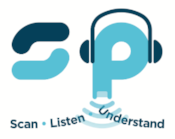Supporting EAL Learners in Reading with Multimodal Learning Tools
English is a tricky language to learn. The way we pronounce phonemes is not consistent and we don’t have set rules. The ‘H’ sound (/h/), for example, is arguably one of the most adaptable with even native speakers often omitting it from words completely. I grew up speaking Estuary English, because I lived in ‘ayes, near ‘eathrow, in London, where h-deletion was ‘ow you spoke. H-dropping causes words like harm, heat, and hold, to sound like arm, eat, and old.
/h/ can be analysed as a voiceless vowel. Not pronounced by pushing airflow over the tongue but arriving by pushing air with the lungs and diaphragm without adding shape. This troublesome letter is the 8th most used in the English language, so it’s hardly avoidable.
The ability to reproduce sounds and read fluently are important skills that English language learners will need to master if they are to become successful language users. For the EAL learner, the process of learning English happens in school through subject learning.
This can create problems, particularly if the learner also has SEN.
There are two phases of learning ahead. The first is Basic Interpersonal Communication Skills (BICS), this is enough language to interact socially and to get by day-to-day and can be picked from between six months to two years. The second is CALP, Classroom Academic Language Proficiency, and it takes much longer to embed. Research from Collier and Thomas (1995) indicates that, with no prior instruction or support, it can take at least seven years to develop CALP. This is the academic language that the learner will need to use to decode exam questions and respond appropriately to achieve qualifications.
Barriers to progress can be a lack of exposure to spoken English at home and in social situations. In many schools, EAL learners often prefer to speak to friends in a home language and this can delay the development of CALP.
SEN difficulties that may not be initially obvious include hearing impairments, visual disturbance, and dyslexia. Anxiety is not always visible, but it can make a learner very hesitant to participate in activities like reading aloud or speaking spontaneously.
The potential for misunderstanding is high and the impact can be long lasting.
Fortunately, with the growth of the EdTech industry, teachers can now include assistive technology as part of the support package. Text-to-speech tools and word scanners like the ReaderPen can help to train the ear with clearly spoken words while simultaneously supporting reading with highlighted text. The learning landscape is becoming more immersive and multimodal techniques are helping teachers to develop new learning strategies for EAL learners.
Find out more about the ReaderPen on our website.
If you would like to see some video case studies, click here.
You may also be interested in finding out more about LingoPen which is a text reading translator. If so, this is a good place to find out more.
‘Appy days!
